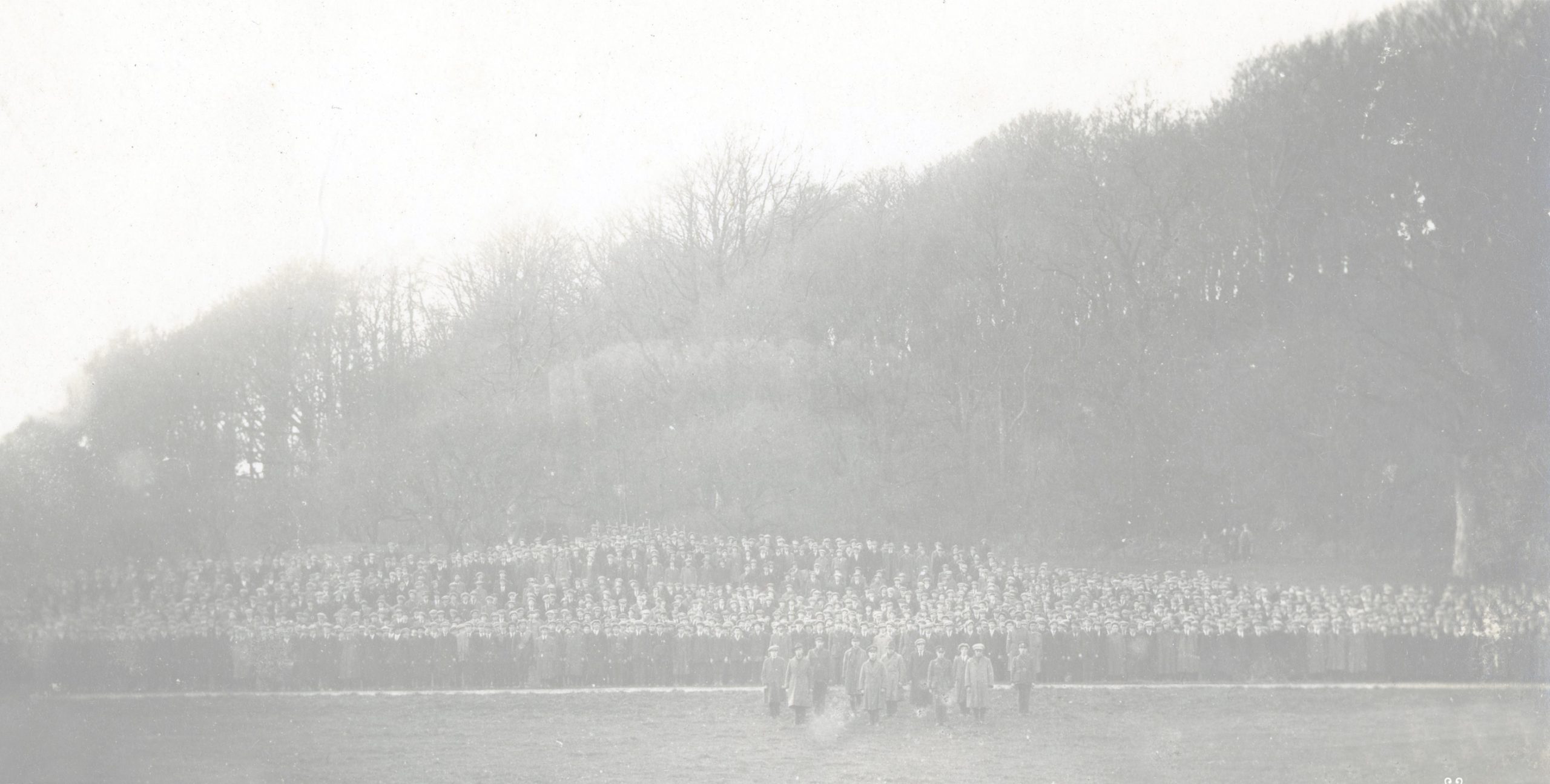Dr Myles Mac Evilly
With the authorisation of James Chambers, Commandant of the Castlebar Battalion of the West Mayo Brigade IRA, a local committee was formed at the beginning of January 1922 to collect funds “to provide a Castlebar Memorial Cup to perpetuate the memory of Captain James Mac Evilly and his four comrades who were killed during the Kilmeena Ambush on the 19 May 1921”, just six months previously.1
The committee, consisting mainly of Mac Evilly’s former comrades from the Castlebar Battalion, included T. Brett, James Swift, John Chambers, John Gavin, Michael Hughes, John Cooney, James Hughes, William McCarthy, Hugh Patterson and Mark Killilea. The ambush, under the command of Michael Kilroy O/C West Mayo Brigade IRA, took place near Knocknabola Bridge on the Westport to Newport road and was against a mixed force of twenty RIC and Black and Tans in two Crossley tenders (lorries) and a Ford car.2
William Brett, a local Castlebar artist, was commissioned to design the Cup. A local newspaper expressed the hope that “lovers of liberty will subscribe generously to enable the promoters to provide one [cup] worthy of the gallant young soldiers of Ireland whose memory it will perpetuate.” The decision to associate the Cup with the Castlebar Coursing Club, above any other organisation, must have been taken early in 1922 by the commissioning committee to allow Mr. Brett time to incorporate coursing motifs and symbols into the design.
This article provides background information on the Castlebar Memorial Cup, a unique accolade in the history of the Irish Volunteers at the time, including on its development and design. It also outlines the local historical context in Castlebar which gave rise to the Cup and includes some details on its designer and on the silversmith firm which made it.
Fund-Raising
Subscribers towards the cost of designing and crafting the Cup came from the local Castlebar Battalion, from people and businesses in Castlebar and from the Castlebar Bacon Company, the County Home Staff and the male and female staff of the Mayo Asylum.4 Ten shillings were contributed from an outlying church-gate collection at Glenisland.5 After February 1922 no further list of subscribers was published in the local newspapers.
No attempt was made to solicit funds from any of the other West Mayo Brigade battalions. Long after the ambush there was residual regret in Castlebar at the failure of the better-armed (most with rifles) and more experienced Volunteers from Westport to arrive in support of the ambush on 19 May 1921. Twenty years later, Ernie O’Malley noted how reluctant many of the Mayo Volunteers were to recall the Kilmeena Ambush.3
Ultimately £120 was collected, about €7,000 in today’s money. In time it became known as the Castlebar Coursing Club Mac Evilly Memorial Cup, with the hope that it would be offered perpetually as a stake at Castlebar coursing meetings.
Castlebar Coursing Club
The Castlebar Coursing Club was revived in November 1909 by Dr Alfred Faulkner, a local medical doctor and sportsman. In order to make the sport of hare coursing universally more popular in Mayo this club subsequently encouraged the formation of the Mayo Coursing Club in 1913 with Lord Bingham, son of the 5th Earl of Lucan (he of Charge of the Light Brigade fame) as patron. The Castlebar Coursing Club remained in existence until the 1970’s in various re-re-incarnations in one of which J.P. Mc Cormack, himself a former volunteer with A Company, Castlebar Battalion, was a founding member.6 In its heyday the Club had a number of fine perpetual trophies on offer each year including a heavy two-handed cup costing 75 guineas presented to the Coursing Club in February 1922 by a Mr James Haughey. This was executed by a Dublin firm and was technically described as a ‘Pistol Handle Cup’. Another valuable cup was donated to the Castlebar Coursing Club in January 1926 by Mr James Rank of the Liverpool milling firm, to be called The Millocrat Cup. Mr Rank presented the cup through Mrs Lavelle, proprietor of the local Riverside Bakery, The Bridge, Castlebar.
At a coursing meeting on 16 February 1927 both the Haughey and Millocrat Cups were awarded for successful stakes.7 There was no mention of the Castlebar Memorial Cup. With the dissolution of the Castlebar Coursing Club in the 1970’s it is understood that these cups were subsequently stored for different periods in the local National Bank for safekeeping.
Mr William Brett, Artist
The Cup was designed by local Castlebar artist, William Brett of Davitt’s Terrace, Castlebar, as recommended by the original commissioning committee. He was known locally for his painting of leading nationalist and poet William Rooney (1873-1901), presented to the Castlebar branch of the Celtic Literary Society on the opening of The Rooney Hall in Tucker Street, Castlebar, in 1912. He later exhibited a number of paintings based on the theme of the Kilmeena Ambush at the Ballyhaunis Feis in early July 1922.8 These included Before Kilmeena Ambush and After Skerdagh, the latter painting referring to a subsequent fatal engagement on the retreat from the Ambush by the West Mayo Brigade Flying Column. He also exhibited three bust paintings then, Michael Collins, Séamus Mac Evilly and Terence Mac Swiney (prize piece). The fate of all of these paintings remains unknown.
Description
The Cup itself incorporates a large silver bowl with Celtic Revival motifs and intertwined hares, the bowl resting on the heads of three gundogs (or greyhounds) and held aloft by three rifles, all in silver. It has a circumference of 25.5 cms and is 39.5 cms in height including the base and 31 cms. without the base. It weighs 4.5 kg without the base. The item received an official stamp by the Goldsmith’s Company of Ireland when manufactured in Dublin in 1922 by the firm of Edmond Johnson Ltd of 94 Grafton Street, Dublin where they had their showrooms (the site of the present Brown Thomas department store), with their workshop at 45/46 Wicklow Street close by. The official marks on the Cup includes EJ for the firm of Edmond Johnson and the plate letter G for 1922. In contrast, Cork (Civil War) silver items were not stamped at that time due to the inherent danger in transporting silver items from Cork to Dublin in a time of uncertainty.
Edmond Johnson Ltd, Dublin
The firm of Edmond Johnson began in 1760 and possessed, in time, a royal warrant from the Crown as manufacturing jewellers and silversmiths. An Edmond Johnson was Master of the Goldsmiths’ Company of Dublin from 1883 to 1890. The firm specialised in the reproduction of famous antique ornaments especially after getting permission to make a replica of the Ardagh Chalice in 1879 after its restoration by Edmond Johnson. Previously, in 1849, a copy of the 10th century Ballyspellan Brooch was made by yet another Edmond Johnson: this was purchased by Prince Albert as a gift for Queen Victoria. The Edmond Johnson firm later exhibited at the World Fair in Chicago in 1893 as well as at the first Irish Arts and Crafts Fair in Dublin in 1896 where many pieces of Celtic ornamentation in gold and silver were featured, representing the Celtic Revival then at its height. Later they exhibited at the Paris Exhibition of 1900 and the Glasgow Exhibition of 1901.9 Apart from royalty, their clientele included wealthy private individuals, the Churches, the Military/RIC and overseas museums.
In 1921, at the request of the GAA, the firm of Edmond Johnson Ltd created the first Liam Mccarthy Cup to be awarded to the winner of the All Ireland Hurling Championship. This was based on the design of a medieval Irish wooden drinking cup or mether. The Sam Maguire Cup later commissioned by the GAA in 1928 for the winner of the All Ireland Football Championship was crafted by silversmith Michael J. Staunton on behalf of the firm of Hopkins and Hopkins, Jewelers and Watchmakers of O’Connell St. Dublin. Staunton had served his apprenticeship in the Edmond Johnson firm and based his design for the Sam Maguire Cup on the original Ardagh Chalice. Other perpetual cups manufactured by the firm of Edmond Johnson Ltd included The King’s Cup for International Yacht Race, Cork Harbour, 1902. The Edmond Johnson Ltd Trophy for the Dublin Bay Sailing Club at the Royal St. George Yacht Club is awarded still, as are the firm’s The Queen Victoria Cup for the Royal Munster Yacht Club at the Cork Regatta and The National Hunt Cup for the Punchestown Races. They also made the Sanctuary Lamp for the Honan Chapel at University College Cork.
Thus, the Castlebar Memorial Cup was in august and an expensive company. The firm ceased trading in 1927, most likely on account of the loss of many of their patrons after Irish independence, having been up to then, in many respects, an Irish ‘Fabergé’.
James (Séamus) Mac Evilly10
Séamus Mac Evilly was the only Castlebar-born Volunteer to be killed in the War of Independence and the Civil War. He was not the most senior officer from Castlebar mortally wounded at Kilmeena, that being Commandant Paddy Jordan, O/C Castlebar No.1 Battalion, though Seamus was the first to be killed. Why he should be singled out by the fundraising committee is not clear.
His personality was described as ‘gentle and refined’ by Edward O’Malley of B Company, 3rd Battalion, West Mayo Brigade in his book Memories of a Mayoman published in 1981 and he was a popular man according to an early account of his death.11 He came from a well-known Republican family in Castlebar, his father having chaired the Castlebar General Election meeting in 1917 at which de Valera spoke. Séamus was a member of Na Fianna Éireann since September 1915 and later the Irish Volunteers. He was Registrar of The District Dáil Court on its establishment in Castlebar on 28 May 1920 and later a full-time member of the West Mayo Brigade Flying Column after it was formed in Spring (March) of 1921. His father, being an IRB member, administered the IRB Oath to his three sons, Séamus, Thomas and Jerry. By late 1922 Séamus’s two brothers were both fighting with the anti-Treaty forces, Thomas in Sligo and Jerry in Fermoy. Séamus was held in some esteem locally as the number of wreaths at his funeral testify. These were from his comrades in A Company, Castlebar Battalion, from Officers and Boys of the Castlebar Fianna (founded by his brother Thomas in September 1914), from Members of the Castlebar Cumann na mBan, and from the Staff of the Castlebar Bacon Company amongst others and matching those subscribers to the Cup almost a year later.
Historical background
At the time when the decision was taken to raise funds for the Cup, the relationship between local Brigade officers in West Mayo and GHQ in Dublin was tenuous at best. It was not forgotten locally that arms purchased by Quartermaster Tom Kitterick by local subscriptions in Mayo were diverted by Michael Collins to the South, despite promises to the contrary, earlier in the War of Independence.12 While on a visit to Castlebar on 1 April 1922 to promote the Treaty, Collins became embroiled in an acrimonious encounter with local Republicans causing him to take refuge in the Imperial Hotel with his sister Kitty. After a chase, shots were fired by his bodyguard Charlie Byrne (from Collins Squad) and a woman, a Mrs Fogarty, was injured.13 Later Collins had a disagreeable encounter with Michael Kilroy and left Castlebar, enraged after Kilroy questioned why GHQ was slow to release money to recompense local Mayo businesses.14 The next day, on his way to Granard, Collins visited his sister Kitty and her pupils in Carragowan National School, where she taught at this time.15 She was married to Joe Sheridan, brother of the legendary Olympic athlete from Bohola, Co. Mayo, Martin Sheridan. Collins never forgot that discourteous visit to Castlebar16 and the events leading up to it while, in turn, Mayo voted almost overwhelmingly anti-Treaty, with only two Mayo TD’s voting for the Treaty on 10 June 1922 in Dáil Éireann.17
Thus there were fertile grounds in Castlebar, Co. Mayo for a collection towards a Memorial Cup to commemorate, as civil war loomed, those who had died for a Republic only. The fact that the Cup was commissioned, designed, paid for locally and manufactured all within 18 months of the Kilmeena Ambush was an indication of the depth of feeling in Castlebar for those Volunteers who fell at Kilmeena on 19 May 1921.
Dr Myles Mac Evilly
February 2021
Endnotes:
- Connaught Telegraph. 7 January 1922.
- Duffy, Jarlath Kilmeena (1985) Cathair na Mart. Vol. 5 No.1 p5-30 and 1986 Vol 1 Part 2 p33-62.
- As quoted in Hopkinson, Michael The Irish War of Independence (2002). Gill & Macmillan Ltd. p135.
- Connaught Telegraph. 2 February 1922.
- Connaught Telegraph. 10 February 1922.
- McCormack, JP Castlebar Nostalgia Board, 20 May 2010, posted by ‘Royal ‘ in reply to JP Mc Cormack – Noted Fenian Part 1.
- Connaught Telegraph. 26 February 1927.
- Connaught Telegraph. 15 July 1922.
- Edmond Johnson Ltd Epitome of Reproductions of Ancient Celtic Ornaments by Edmond Johnson Ltd, 94 Grafton St. Dublin (1910), p36. (printed by Waller & Co.).
- Mac Evilly, Michael (2008) Seamus Mac Evilly and the West Mayo Flying Column. A Family Memoir.
- Connaught Telegraph. 28 May 1921.
- Kitterick, Tom, BMH WS 872, p24.
- Michael Collins Castlebar Meeting 2ndApril 1922. Castlebar Nostalgia Board. Posted by Noel 2nd April 2015.
- O’Malley, Cormack, Ed, Mercier Press (2014). The Men Will Talk To Me – Mayo Interviews by Ernie O’Malley. Michael Kilroy, p63.
- Reddiough, James (2017) Michael Collins and the Mayo Connection. Posted 11 December 2017 in ‘History’ https:/Irish-Memories.com
- Price, Dominick The Flame and the Candle: War in Mayo 1919-1924 (2012) The Collins Press, p209. T
- Idem p215.

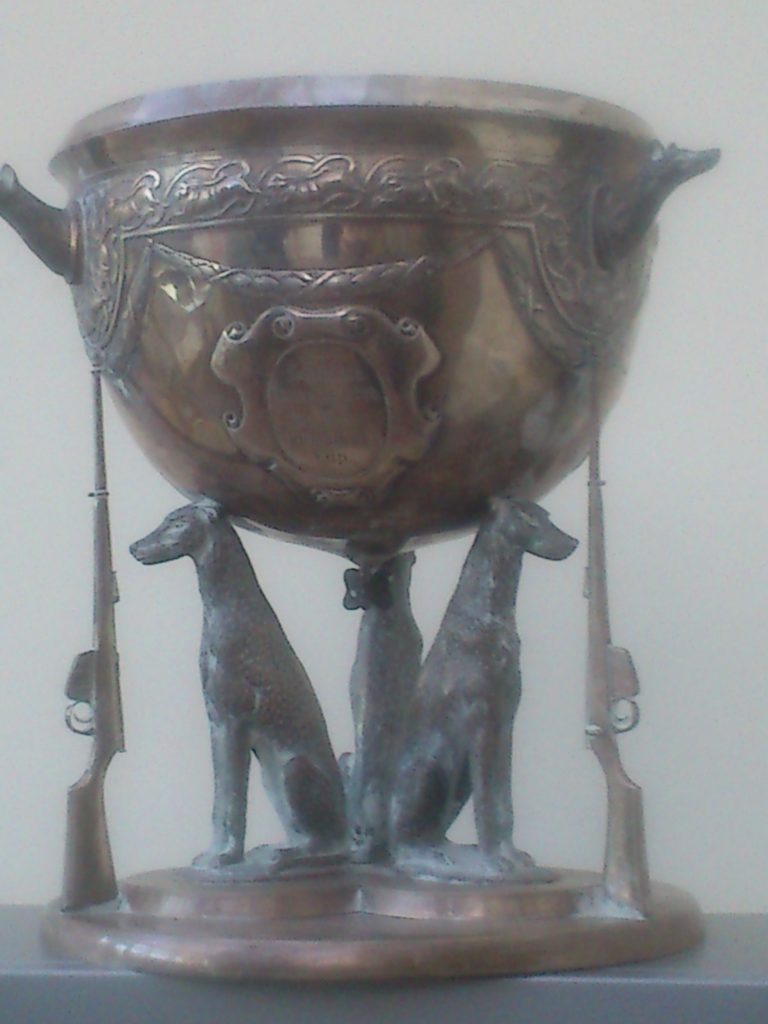

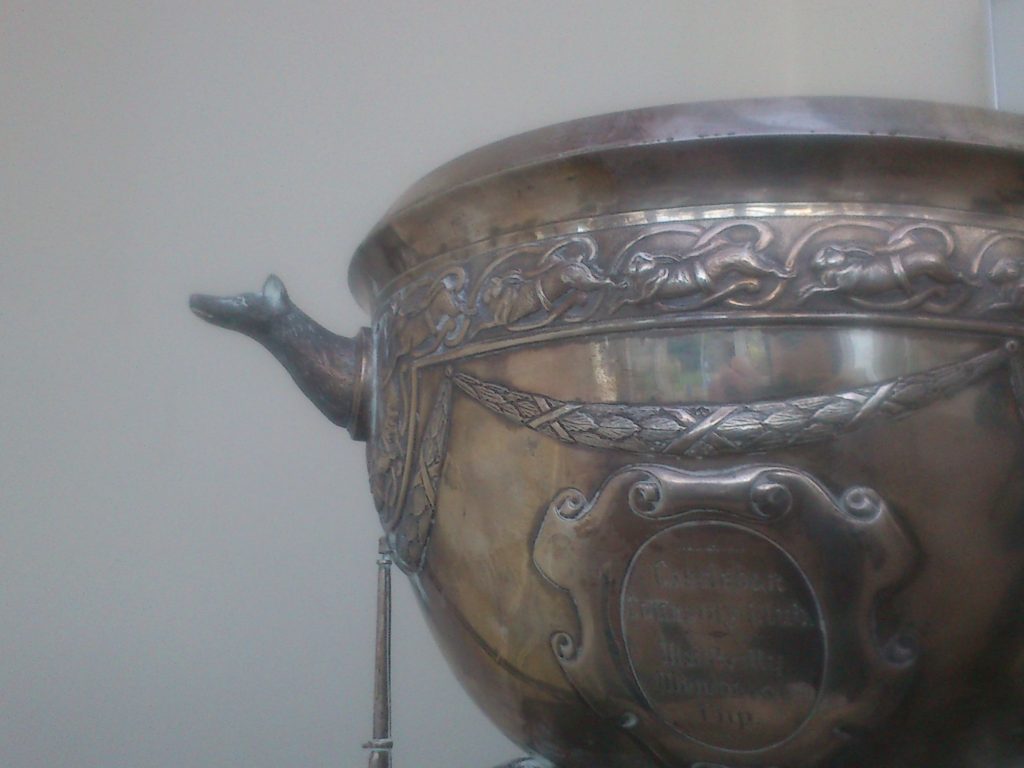
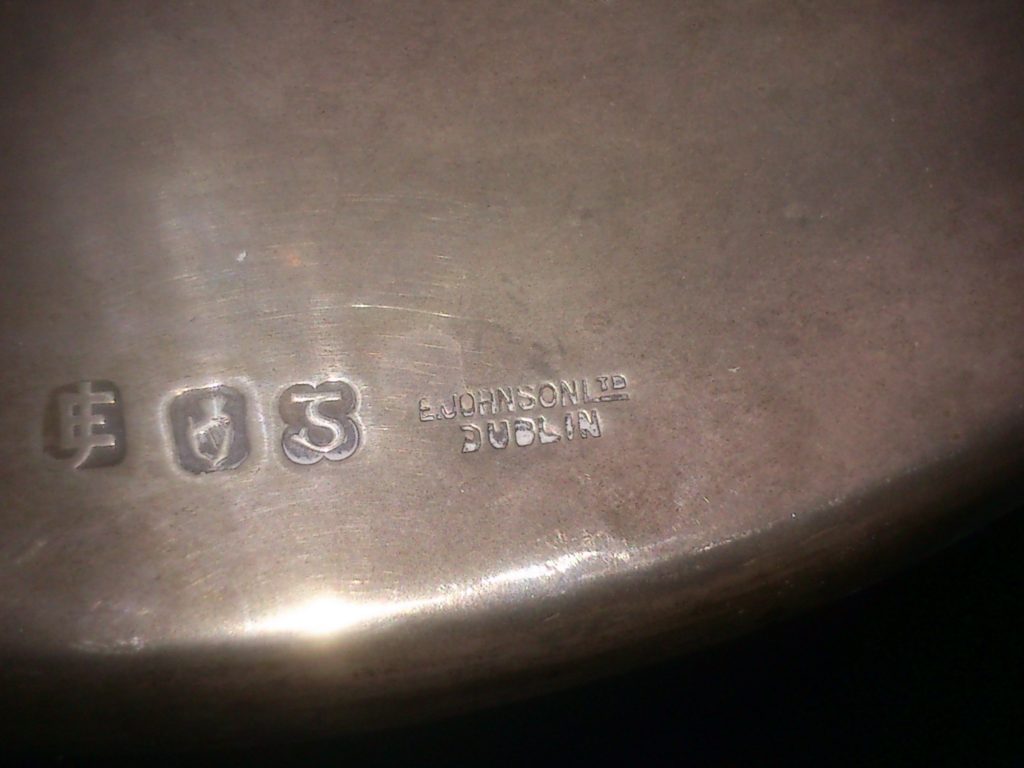
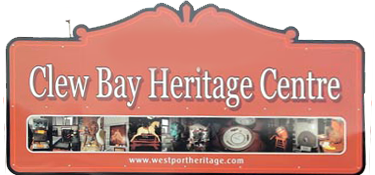 www.westportheritage.com
www.westportheritage.com